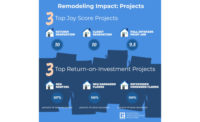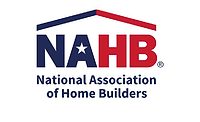
When home buyers pay closer attention before construction starts, they are especially likely to see the advantages of modular construction, according to panelists at a press conference held last week at the National Association of Home Builders (NAHB) International Builders' Show in Orlando, Fla. Research shows that a typical modular home is built more quickly when home buyers make timely decisions.
"Builders are looking for new solutions in today's challenging economic climate," said Kevin Flaherty, vice president of marketing for Genesis Homes and Champion Home Builders Inc., based in Troy, Mich. "When homeowners choose modular construction, as they often do, they experience measurable savings in cost and time."
The time and cost savings can be measured with the U.S. Census Bureau's data on housing starts. "The Census Bureau publishes characteristics of new housing, but typically doesn't show detail for modular homes," said Paul Emrath, NAHB vice president for survey and housing policy research. "By tabulating the Census data ourselves, we can see the characteristics of today's modular homes in some detail, and compare modular to site-built construction."
The data show that a typical modular home started in 2010 has three bedrooms (71.6 percent), two full bathrooms (56 percent) and vinyl siding (83.9 percent).
When compared to site-built, a notable difference is how quickly modular homes tend to be built. The average time from start to completion for a modular home is five months, compared to 6.9 months for a site-built home, and this average savings of roughly two months has been consistent over time. Modular homes also tend to be slightly smaller, with an average of 1,902 square feet compared to 2,387 for site-built, and less expensive, with average permit value of $76.80 per square foot versus $94.34 for site-built.
It is necessary to base the cost comparison on permit value rather than price, because about 80 percent of modular homes are custom built on the owner's lot and therefore record a sale price, unlike site-built homes that are often built speculatively for sale at some point in the future, Emrath said.
The Census data show that modular homes are located more often in the north central and east coast Census divisions. Additional research conducted by the business planning and marketing consulting firm Hallahan Associates uses permit data to analyze trends in modular home construction by state. "During the past five years, there has been a visible trend of modular home market share growth in key states like New York and Virginia, where modular has an established history," said Fred C. Hallahan Jr., founder and principal of Hallahan Associates in Baltimore.





